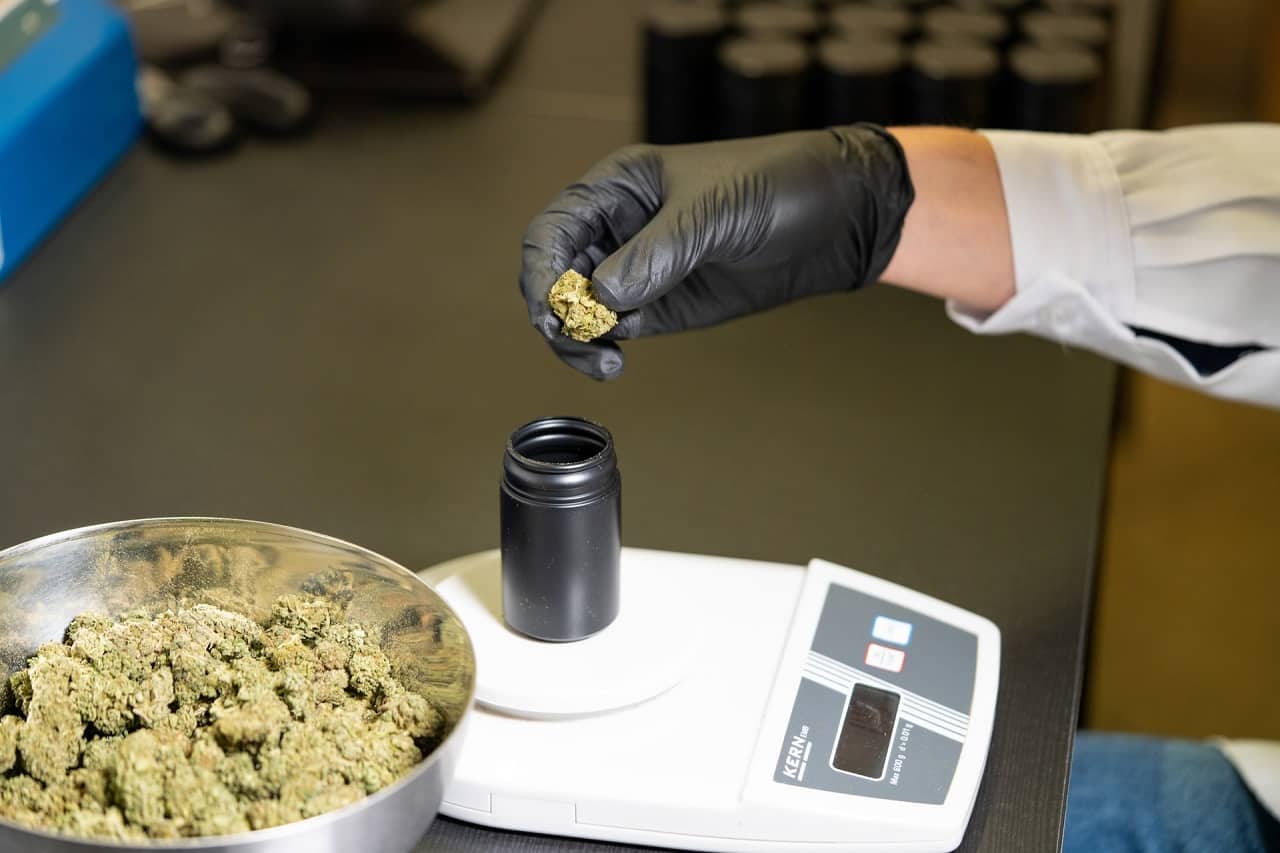The use of cannabis for medical and recreational purposes has continued to gain rapid popularity, thanks to its legal status in many parts of the world. The industry is currently witnessing a major boost with more people looking to invest in the business.
In the United States, the legal cannabis industry recorded a whopping $16 billion in total revenue as far back as 2017. This figure is expected to rise by 150 percent by 2021! Little wonder more people are thinking of venturing into the lucrative industry while it is still relatively young.
However, starting a cannabis cultivation operation often requires raising funds because it takes a lot of money and large acres to pull off a successful cannabis business. This is where investors come into the picture.
But they are not likely going to bet a dime on your idea, regardless of how nice it seems, unless you have a compelling strategy penned down in black and white. This article will show you everything you need to develop a cannabis cultivation business plan that is likely to attract investors.
Determine Your Business Model
First off, jumping on the cannabis bandwagon does not guarantee success. Indeed, more states and regions are legalizing the commodity, but that’s not all good news. Cannabis businesses are becoming too many in parts of the world where the product is legal. As you probably would have guessed, oversaturation means many companies will end up with tons of unsold products.
The biggest mistake any business owner can make is to solely rely on hype to run a successful cannabis operation. Investors will not throw their money at you simply because the cannabis industry is currently experiencing explosive growth. You must stand out from the competition, and to do that, your business plan needs to highlight your unique services or products.
Without a specific business model, it will be difficult to write a winning business plan. While the cannabis industry may seem like one huge market place with every seller marketing just one product (cannabis), it does have different business types.
Focusing on a specific business model will let you write a more streamlined plan. The common cannabis business types include:
Production

This involves farming or growing the raw material (cannabis) for onward sales to processing companies. The business operations at this level usually include the acquisition of real estate, purchase of modern farm equipment, and getting the crop for large or small-scale production.
Ideally, business plans for these models will revolve around seeking funds for increasing production operations, whether by expanding the farm, buying more farming machines, or similar funding needs.
Processing
Cannabis processors are essentially businesses that serve as middlemen between producers and retailers. These business models require specialized equipment to process cannabis collected from farmers into finished consumer products for medical and recreational purposes.
In addition to other things, business models in this category should tailor their business plans to reflect the need to invest in cutting-edge equipment for better and faster raw material processing.
Retailing
These are businesses in the cannabis industry whose sole operation is centered on selling finished products to consumers. Dispensaries are prime examples of retailing operations.
If this is your business model, your business plan needs to convince potential investors that there is a high demand for consumer products in your location, and your business is well-positioned to meet that need if properly funded.

Pro Tip: You can build your model around a secondary business such as advertising, delivery, supplies, and more. These tend to be more lucrative (in some cases) and have fewer regulations since they don’t directly deal with cannabis.
Components of a Winning Cannabis Cultivation Business Plan
Your best bet to avoid ending up like one of the many unprofitable cannabis companies is to create a business plan with the following components:
- The executive summary
- The size and type of cannabis cultivation you plan to execute
- Your company’s mission
- Clearly defined strategy
- Details of real estate
- Biography of your team leaders
- Clear-cut benefits of your cannabis operation
- Target market
- Your financial projections
- How you plan to use funds
- Your offer and terms
- Appendix
Pro Tip: Never edit a business plan you found on the internet or use a template from any application software. Own your business plan a hundred percent. You want the words and flow to be as natural as can be. Investors will know if you are not authentic, and that will jeopardize your chances of getting them on board.
Key Components of a Cannabis Cultivation Business Plan
The Executive Summary
The executive summary is one of the sections of your document that can make or mar your business plan. Potential investors don’t just skim over this part of the plan; they study it closely to determine whether or not your company is worth their funds.
Remember, it is a summary, so you want to keep the section concise. The recommendation is to limit the content to two pages at most. This is where you should describe your company, what it does, and exactly what you want from potential investors.
Try to include basic information about the product since not all investors are knowledgeable in the cannabis industry. Do not forget to include past and present statistics of cannabis popularity and increasing demands for its legalization worldwide. Revenue forecasts from reputable sources are also recommended in this section. This will help targeted investors to gauge how well the business is likely to perform.
If you do this correctly, the executive summary can be a standalone document, summarizing everything in your full-length cannabis cultivation business plan.
Pro Tip: You can draw inspiration from several sources or even outsource the writing of your business plan to a professional. But make sure the script is 100% yours!
The recommendation is to include the following sections in your executive summary for best results.
- Company profile: Your company name, its physical location, and other contact information
- Your value proposition: What your company brings to the table, including your offers, the problems your business seeks to solve, and why it is important to solve the identified problems
- Your target market: Be specific about your ideal buyer
- Competition: Do not fail to mention what other companies are in the same business or offer similar services
- Leadership team: Give brief bios of the people on your management team
- Financial summary: Give concise details of your business model and the startup cost. Include revenue, liabilities, and the fund you require
- Traction: Briefly explain why you think there’s a need for your company’s specific solution in your location
Showcase Your Company’s Opportunity
The rest of your full-length business plan will have many or few other sections, depending on your business model. But the central theme of the various sections is to show how your company is set to take advantage of the cannabis industry with its unique opportunity.
Whether your company is focused on extraction operations, starting or expanding a cannabis farm, or venturing into a dispensary, the plan needs to set you apart from the competition. Investors need to know why they should pitch their tent with your company instead of other brands.
Let your business plan answer salient questions such as:
- What are the unfulfilled needs in the market, at least in your location?
- What are the specific products or services that your company offers or plan to offer?
- How would those products or services fulfill the market needs?
Pro Tip: A formal business plan gives you a huge edge. It demonstrates your professionalism to potential investors. It shows how clearly you understand the stereotypes and stigma associated with cannabis. Your plan also says, in no uncertain terms, how you have overcome such flawed premises and developed a workable idea for selling the product to people who enjoy and want it.
While farming operations and dispensaries readily come to mind, the cannabis industry is way more than that. Remember that the more unique your brand and offerings are, the less saturated your opportunity. Plus, investors are more likely to put their money in an operation that is less crowded.
Thankfully, you don’t have to think too hard to find something unique because cannabis uses are becoming more diverse. Consumer products include concentrates, flowers, tinctures, edibles, vaporizers, pre-rolls, and more.

You can also venture into less populated businesses such as the relatively new cannabis-inspired lodgings. Some of these cannabis-friendly getaways offer marijuana-infused oil massage! If you have a thing for foods, you can come up with a unique edible cannabis line.
If you are an inventor, you can draw inspiration from the various vape pens and then develop a business plan around helping vapers ingest the product safely. The opportunities are endless. The bottom line is to not limit your company to traditional or more popular needs.
Problems and Solutions
A winning cannabis cultivation business plan should identify problems and describe how your company will provide solutions to the problems, whether through production, processing, or retailing operations.
For example, your location may have many small-scale farmers who majorly depend on manual equipment for growing cannabis. Production is low, and there is considerable loss of products since everything is done manually.
Your company decides to solve this problem by seeking funds to buy cannabis farming machines built with the latest technology. The result will be an increased harvest and better quality. Processing businesses will be willing to pay more for your company’s harvest since it has superior quality.
Target Market
Your business plan should clearly state your target market. This includes:
- Everyone within the legal age in your location (total available market)
- The people who are capable and willing to pay for your cannabis product or service (ideal clients)
- The actual customers you think your company can reach in your first few years of operation
Your marketing and sales plan should be tailored to your ideal client. You can use demographic information and social media to determine who your ideal customer is.
Keep in mind that your ideal customer depends on your specific business model. For example, if you focus on production (growing the crop), your ideal clients are not individuals but businesses in processing operations.
Financial Projections
Your financial plans are necessary to gauge your company’s performance. When writing this section, remember to include:
- Profit and loss statement: Explain how much profit your company made and how much it lost within a given period (usually three months). List all the income and expenses and show the net profit and loss.
- Cash flow statement: A monthly account of how much money your business paid out and how much came in.
- Balance sheet: A summary of your company’s financial performance, including how much you are indebted to vendors, how much others owe you, and the cash you have in the bank.
- Sales projections: Provide an estimate of what you think your company will sell within a given timeframe (typically between one to three years).
- Personnel costs: The cost of employees.
- How you plan to use funds: This is crucial, as investors will like to know how you plan to use their money for purchases or marketing.
Appendix
This section is where to include charts, images, and graphs. You can also include expanded versions of other details in this part of the business plan. Remember that charts provide succinct visuals of financial projections that can be handy for investors who don’t have the patience to read through every detail of your plan.
Pro Tip: A cannabis cultivation business plan is not cast in stone; it is a living document. It is crucial to revisit and revise it from time to time, no matter how great the initial plan is. Compare your actual results with projections and regularly make revisions where necessary.
Conclusion
Hopefully, you are in a better place to develop your unique cannabis cultivation business plan that gives your company the winning edge. The process might appear daunting at first, especially if it is your first time writing any type of business plan. You are welcome to contact us if you feel stuck at any stage or if you need a little bit of assistance.

